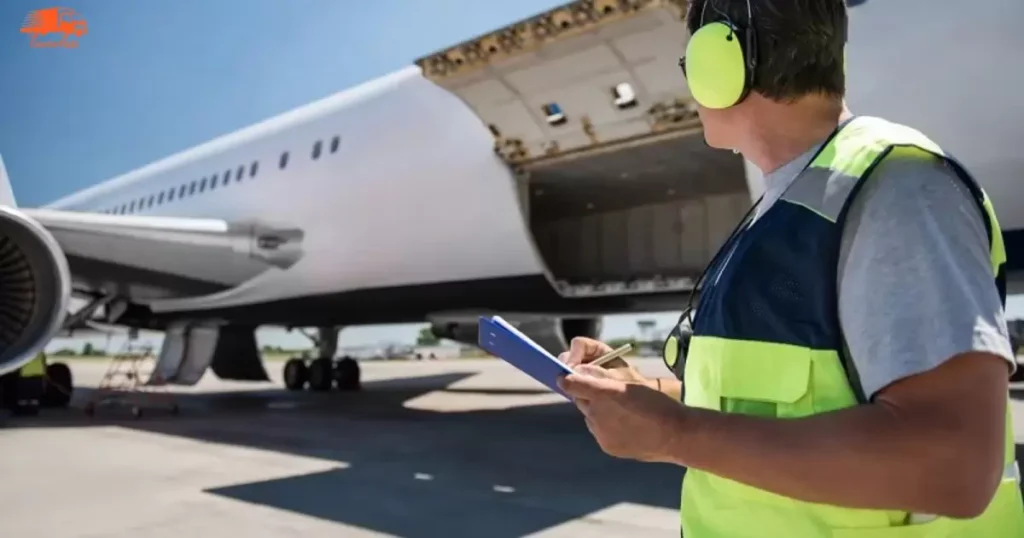Inbound out refers to the dynamic process of attracting and engaging audiences through compelling content and experiences. While simultaneously fostering outbound connections to create a holistic and interactive communication strategy.
Stepping into the world beyond Customs is like unraveling a mystery in every step. As passports bear witness, each stamp echoes tales of adventure, culture, and the thrill of the unknown. Inbound out of Customs, where passports transform into portals, and every traveler becomes a storyteller.
It marks the triumphant journey of goods, liberated from the bureaucratic embrace of border control. As these commodities break free from custom confines. They carry with them the tales of global commerce and the anticipation of reaching new horizons. With customs conquered, the world becomes their oyster, ready to unveil the next chapter in their transcontinental adventure.
What Does Inbound Out of Customs Mean?
Inbound out of customs signifies the thrilling liberation of your package from customs scrutiny. It’s the exciting moment when your awaited parcel breaks free, ready to reach your hands. The phrase marks the end of bureaucratic hurdles and the start of your possession’s journey to you.
Where is My Package When I Receive the Inbound Out of Customs Alert?

The anticipation builds as you receive that exhilarating inbound out-of-customs alert for your eagerly awaited package. It’s the signal that your parcel is breaking free from the bureaucratic clutches of customs, ready to embark on the final leg of its journey to your doorstep.
Picture your package as an intrepid explorer navigating the intricate customs labyrinth, emerging victorious and ready to traverse the last stretch of its adventure.
Now that your parcel has cleared customs, including passing through the ISC Chicago. It is akin to a well-traveled globetrotter with a renewed sense of purpose. At this juncture, your package is typically en route to a local distribution center, orchestrating its grand entrance into your neighborhood.
How Long Until Delivery After an Inbound Out of Customs Alert?
Once the inbound out-of-customs alert pops up, the clock starts ticking. The delivery timeline becomes a waiting game, a blend of anticipation and impatience. Customs clearance is done, but the exact arrival moment is a logistical riddle.
Refreshing the tracking page becomes a habitual act, hoping to catch the exact moment your package completes its journey from customs to your doorstep. In this post-alert limbo, every passing hour is a tantalizing step closer to the long-awaited delivery.
The package is Stuck on Inbound out of Customs

The eagerly awaited package finds itself in a frustrating standstill, caught in the limbo of Customs’ inbound out processing. Despite its initial journey progress, it now faces an unexpected delay, leaving the recipient in suspense.
- Customs processing hits a snag, halting the package in its inbound out track.
- Anticipation turns to impatience as the parcel lingers in Customs limbo.
What is Inbound out of Customs?
Inbound out of customs means the package has passed through customs checks. The shipment is now in transit within the destination country. Customs procedures have been completed, allowing the package to move forward. The package is on its way to the final delivery destination after clearing customs.
How do customs work?

Customs denotes the government entity tasked with overseeing the import and export of goods, upholding trade regulations, and levying duties and taxes on incoming products.
Established customs procedures aim to facilitate lawful and seamless cross-border movement of goods, safeguarding a nation’s economy, public well-being, and national security. Below is a summary illustrating the functioning of customs:
1. Declaration of Goods
When goods are transported across international borders, the exporter or the person responsible for sending the goods (shipper) must provide a declaration to the customs authorities. This declaration includes information about the nature of the goods, their value, quantity, and other relevant details.
2. Customs Documentation
Proper documentation is crucial in international trade. Common customs documents include the commercial invoice, packing list, bill of lading, and a certificate of origin. These documents provide information about the goods, their origin, and their intended destination.
3. Assessment of Duties and Taxes
Customs authorities assess duties and taxes based on the value, type, and quantity of the imported goods. These fees can include import duties, value-added tax (VAT), and other applicable charges. Tariff classifications and valuation methods are used to determine the appropriate rates.
4. Inspection and Clearance
Customs officials may inspect shipments to verify the accuracy of the declared information and ensure compliance with import regulations. Inspections may involve physical examination of the goods, documentation review, or the use of scanning technologies.
5. Risk Assessment
Customs authorities often conduct risk assessments to identify high-risk shipments, such as those with a potential for smuggling, fraud, or violation of import regulations. High-risk shipments may undergo more thorough inspection and scrutiny.
6. Release of Goods
Once customs authorities are satisfied that the goods comply with all regulations and duties and taxes are paid, they issue a release allowing the goods to enter the country. The goods can then be delivered to their final destination.
7. Enforcement of Regulations
Customs agencies play a crucial role in enforcing trade laws, preventing the illegal movement of goods, and protecting a country’s economy and citizens. This includes combating smuggling, counterfeiting, and other forms of trade fraud.
8. Electronic Customs Systems
Many countries have implemented electronic customs systems to streamline the clearance process. These systems facilitate the submission of electronic declarations and allow for faster and more efficient processing of shipments.
How Does The Process Work?
The inbound out customs clearance process is a meticulous journey ensuring the smooth transition of goods into a country. Customs authorities meticulously review documentation and inspect shipments, safeguarding compliance with regulations before granting clearance.
| Step | Description |
| 1 | Submission of required documentation by the importer. |
| 2 | Customs authorities conduct thorough inspections of the incoming goods. |
| 3 | Assessment of duties and taxes based on the declared value and classification. |
| 4 | Clearance granted upon successful compliance with regulations. |
What do ground handlers do?

Ground handlers play a crucial role in the aviation industry. It is managing various tasks on the ground to ensure the efficient and safe turnaround of flights. Their responsibilities include:
Baggage Handling
- Loading, unloading, and sorting passengers’ baggage to ensure it reaches the correct destination.
Aircraft Marshalling
- Guiding the aircraft on the ground with hand signals to assist in parking and taxiing.
Aircraft Cleaning
- Performing cleaning and sanitation procedures on the aircraft interiors between flights.
Fueling Operations
- Ensuring that aircraft are fueled appropriately, considering safety and regulatory standards.
Aircraft Maintenance
- Conducting routine checks and minor maintenance tasks on the aircraft, such as tire changes and visual inspections.
Passenger Boarding/Deplaning Assistance
- Assisting passengers during boarding and deplaning, especially those with special needs.
Cargo Handling
- Loading and unloading cargo from aircraft, ensuring proper documentation and handling procedures.
Ground Support Equipment Operation
- Operating specialized vehicles and equipment required for ground handling activities.
Deicing Operations
- Performing deicing procedures during adverse weather conditions to ensure safe takeoffs and landings.
Coordination with Airport Authorities
- Collaborating with airport authorities, air traffic control, and other stakeholders to ensure smooth operations on the ground.
Frequently Asked Questions
How long will my package be inbound out into customs?
Customs processing times vary, and it’s challenging to predict exactly how long your package will be inbound out.
How do I get my parcel out of customs?
To expedite the release of your parcel from customs, ensure all required documentation is accurate and complete. Stay in touch with your shipping carrier for updates.
What to do if the item is stuck at customs?
If your item is stuck at customs, first, verify if any additional information or documentation is needed. Contact your shipping carrier for guidance and monitor the tracking status for any updates.
Conclusion
Mastering Inbound out of customs is crucial for global trade success. Streamlining processes reduces delays and boosts efficiency. Best practices in documentation and compliance are key. Proactive strategies enhance supply chain resilience. Compliance fosters strategic partnerships and customer satisfaction.
Transparency and technology optimize customs clearance. Reputation for reliability is built through responsive practices. Refined strategies ensure operational excellence. Success in global markets relies on a well-executed customs process. Enhanced profitability follows a commitment to excellence.

With a wealth of expertise spanning 6 years, I am a seasoned author in the realm of courier services information. My insights illuminate the intricacies of logistics and delivery solutions.






![Julia Boin JAV Bio, Net Worth, Career & Relation [2024 Complete Guide]](https://courierplate.com/wp-content/uploads/2024/11/Julia-Boin-JAV-Bio-Net-Worth-Career-Relation-2024-Complete-Guide-300x157.jpg)




